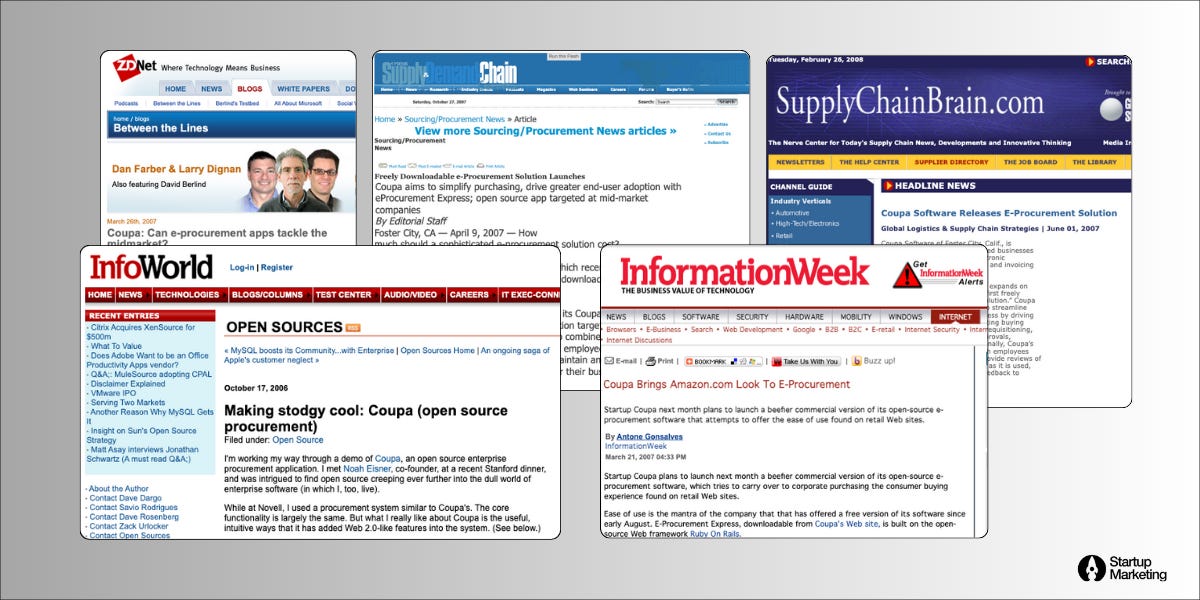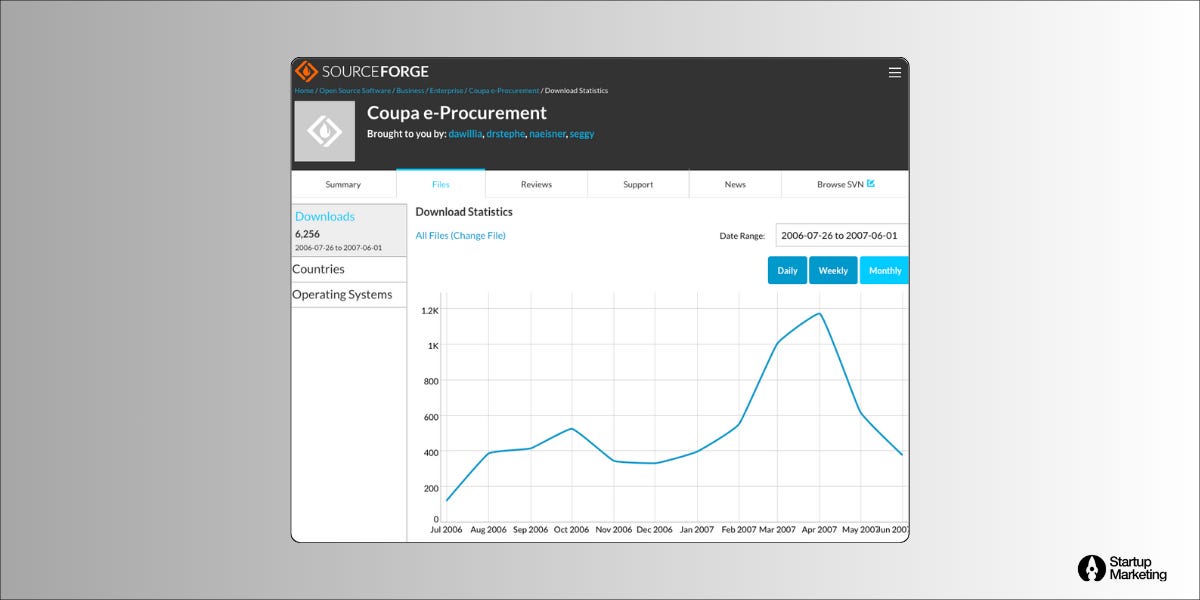Coupa's $0 to $1 Million ARR Marketing Strategy
How Coupa quietly built traction in a mature enterprise market using open-source and blog-era influence.
👋 Hey, it’s Elan. Welcome to my ‘Startup Marketing’ newsletter, where every other week I pick one successful SaaS startup and break down how it grew from $0 to $1 million in ARR. I specifically focus on their marketing strategies - where they started, what worked, and how they executed it.
This week, I explored Coupa’s early-stage marketing in our ‘Startup Marketing’ series — and it’s growth story is unique in its own way.
What interested me to study about Coupa was, it is a enterprise software. After doing growth studies on PLG and SME segment products, I wanted to understand how enterprise products do their early stage marketing. So, here we are!
About Coupa
Coupa is a business spend management platform that helps enterprise companies manage procurement, expenses, and supply chains. Founded in 2006, Coupa went public in 2016, and was later acquired for $8 billion in 2022. That’s a 16-year journey from 0 to $8B — impressive by any measure.
The Team
Coupa was founded by Dave Stephens and Noah Eisner. Both were working on Oracle’s Procurement Application when they decided to strike out on their own.
Coupa’s early vision was all about making procurement radically simpler, faster, and cheaper — especially for mid-market companies that were getting ignored by big, clunky enterprise software.
The Premise
The procurement space was dominated by giants like SAP, Oracle, and Ariba
Coupa was the first open-source procurement software
It aimed to make the buying experience seamless and intuitive for employees
Bootstrapped from day one
The founders had credibility — they were well known in procurement circles due to their work at Oracle.
Marketing Strategy
Coupa’s strategy wasn’t to fight incumbents head-on — it was to expand the market. Their goal was to make procurement software accessible to companies of all sizes, especially those that couldn’t afford Oracle or SAP.
So the strategy was clear: Get in front of finance and procurement teams who wanted to streamline their purchasing process but lacked the budget or IT capacity for heavyweight solutions.
So how did they do it?
Launched an open-source version of the product
Tapped into founders procurement network
Got featured in the procurement blogosphere
Open Source Software
Open source was rare in enterprise software at the time — and almost unheard of in procurement tech. Dave believed it was the future. It aligned with his mission to build software that was user-friendly and dramatically cheaper to own.
By using Ruby on Rails and embracing open source, they were able to build and ship a complex product quickly, with limited resources.
Why it worked?
Procurement automation wasn’t a new problem — the market was mature. Coupa didn’t need product validation; it needed to solve accessibility and affordability.
The open-source approach helped them do both:
No red tape — anyone who needed a procurement tool could simply download and deploy the open-source package.
No cost barrier — teams could try the product without needing budget approvals.
Now, the next challenge is reach.
SourceForge
SourceForge was the go-to destination for open-source projects back then. It offered everything from downloads to forums to issue tracking.
At the time, SourceForge had 1.5 Million registered users. It gave Coupa the visibility it needed.
Coupa’s SourceForge presence became their initial growth engine — 460+ downloads in the first month, and consistently 500+ downloads every month after that.
By the time they launched the on-demand (SaaS) version, they already had a user base familiar with Coupa — and many became their first paying customers.
Dave’s Procurement Network
Dave had deep roots in the procurement space from his Oracle days. He ran a popular blog called Procurement Central and was widely respected in the online procurement community.
When Coupa launched, his network responded.
Writers from the procurement blogging scene — like Jason Busch from Spend Matters — covered Coupa’s updates, early versions, and SaaS launch.
Coupa also got coverage from procurement trade publications after its launch. After all, who wouldn’t want to write a story about an underdog taking on the big players with a fresh approach?
This visibility drove further downloads, brand awareness, and curiosity — whether people were skeptical or hopeful, they were paying attention.
The Impact
Being a free, open-source platform with plenty of buzz in the procurement space, Coupa racked up over 10,000 downloads in its first year combining both website and SourceForge.
They finally launched the paid version of the product a year later — and even a modest 10% conversion rate, with an early ACV of $15K, would’ve pushed them past $1M in ARR.
Coupa’s Growth Engine
Conclusion
Every successful product we’ve studied so far has had a unique advantage — Coupa’s was open-source. Whether it was a strategic bet or an early conviction, it gave them a powerful wedge into a mature, enterprise-dominated market.
The real genius? They didn’t try to outspend the incumbents — they simply made procurement accessible. In a category where total cost of ownership used to be sky-high, Coupa brought it down to 10% of the norm.
That’s how they created momentum — by opening the gates to a market that was otherwise closed to most.











